If you journey down the botany rabbit hole you will encounter dilemmas. Plants that are difficult to differentiate, or look similar enough can frustrate one who is trying to understand the local habitat. A clear example of this situation is trying to compare Black and Red Oak. The leaves of these two trees are so similar that they can easily be confused.
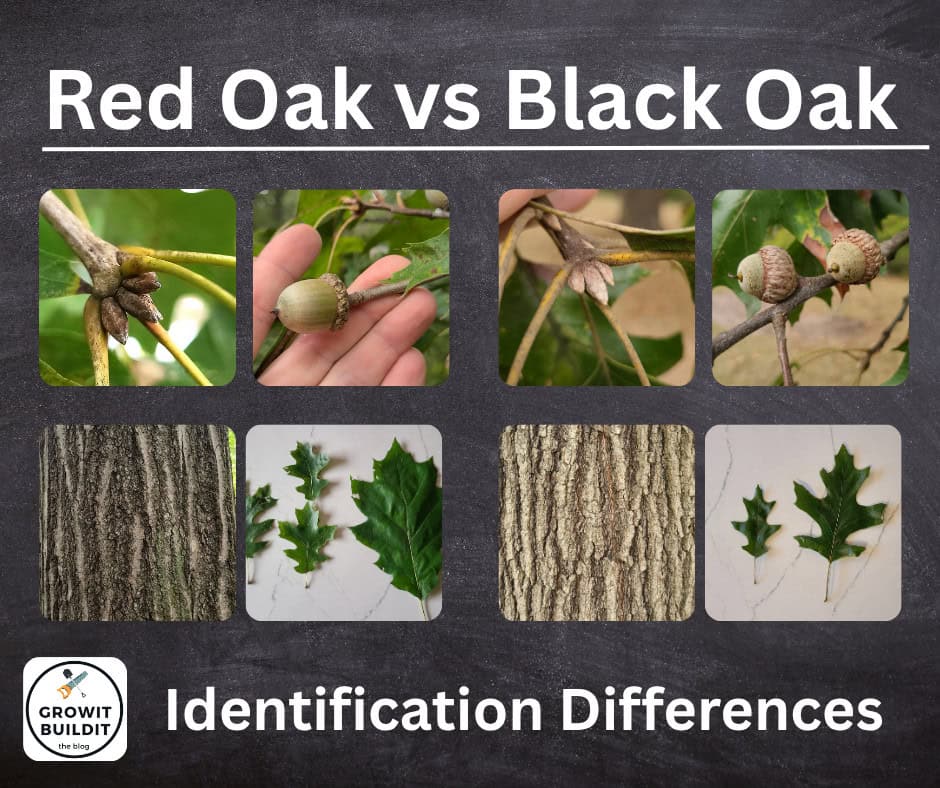
So, I’m going to save you a bit of time by telling you the real secret to differentiating these two trees – look at the bark. The bark is the key to differentiating Black and Red Oak. Red Oak bark is is furrowed with a rough texture, but yet the tops of these ridges is smooth. It almost resembles streets running up and down the trunk. Black Oak bark is furrowed and rough textured, but the pattern is irregular, more like a jig-saw puzzle. This is the key – look to the bark.
There is another key difference though in their acorns. Black Oak acorn caps will cover nearly half the body, whereas Red Oak acorns only cover 10-25%. So, if you find acorns with caps attached, this can also be a major clue.
Still though, I’ll lay out a comparison of the leaves, bark, and yes, acorns to try show you the key differences between these two majestic native trees.
Bark comparison
Mature trunks
As previously stated, the bark is the sure-fire way to differentiate these species. The smooth vertical plates on northern Red Oak combined with it’s furrows being a bit shallower allow one to confidently identify this species even in Winter with no leaves or acorns. The two images below show two views, one looking straight on the trunk while the other looking up it. It is Red Oak’s smooth ridges that make it a dead-giveaway, even in winter from a distance.
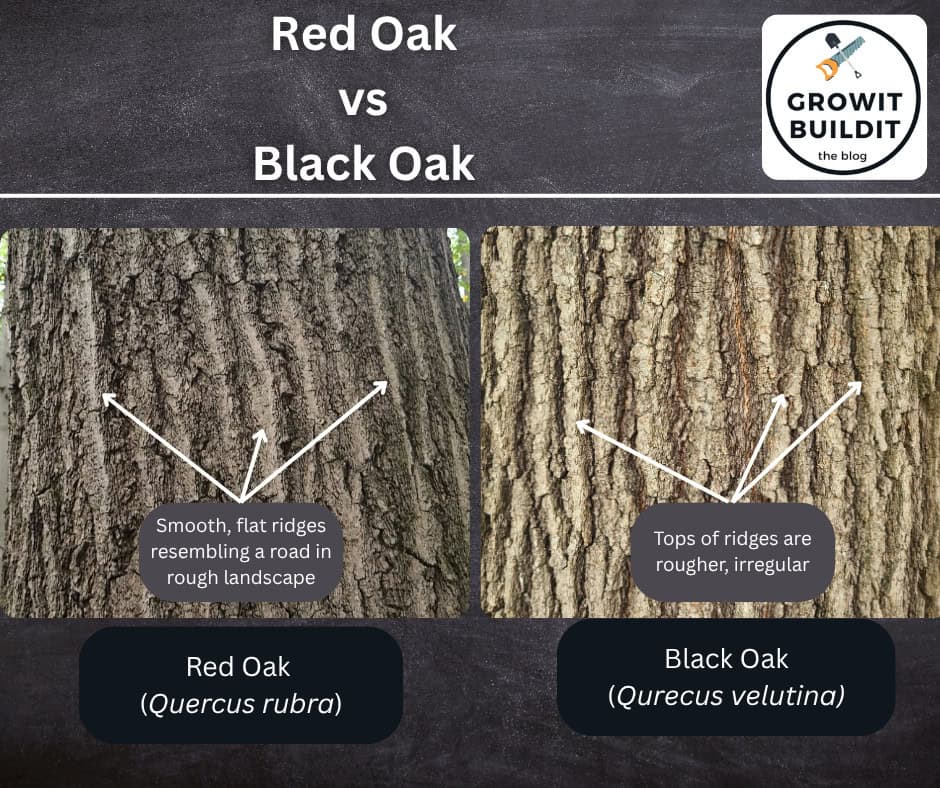
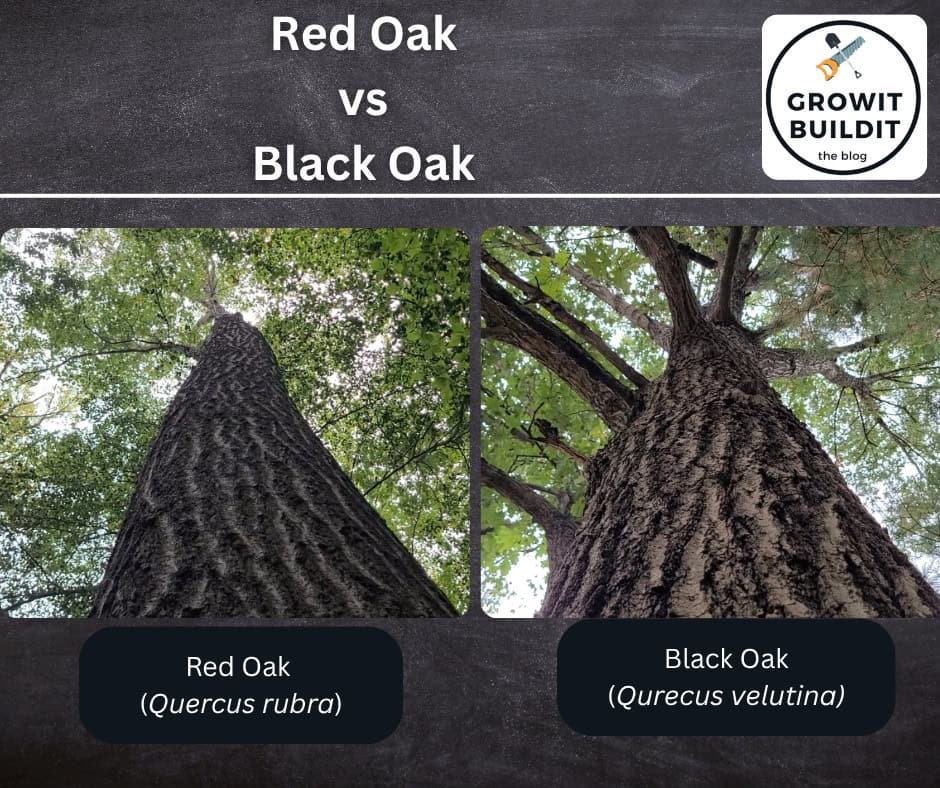
Branch and twig bark
Branch bark for Red Oak is gray, but has a rough, furrowed texture for larger branches, and smooth for twigs. Black Oak branch bark is gray and fairly smooth, and twigs can be brown or gray.
Leaf Comparison
Leaves are more difficult to differentiate the species, so they should be used in conjunction with the bark for a positive identification. The problem is the characteristics just overlap so much. Both have alternate arrangement, both have ovate to obovate shape, and both have numerous lobes with Red Oak typically having 5-11 lobes, and Black Oak having 5-9 lobes.
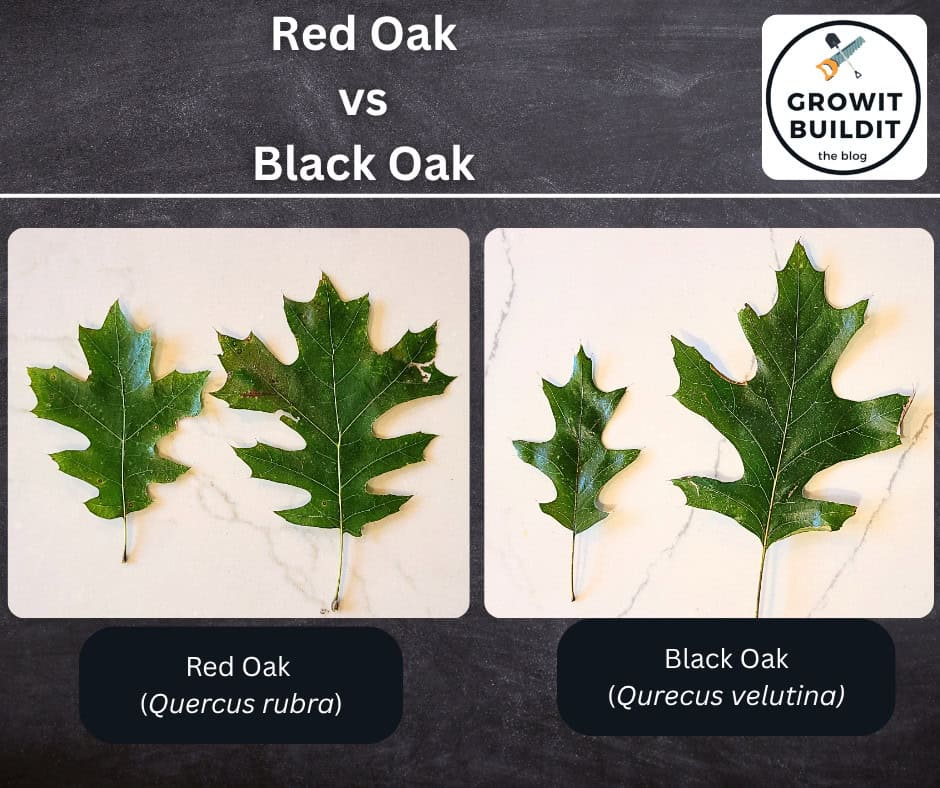
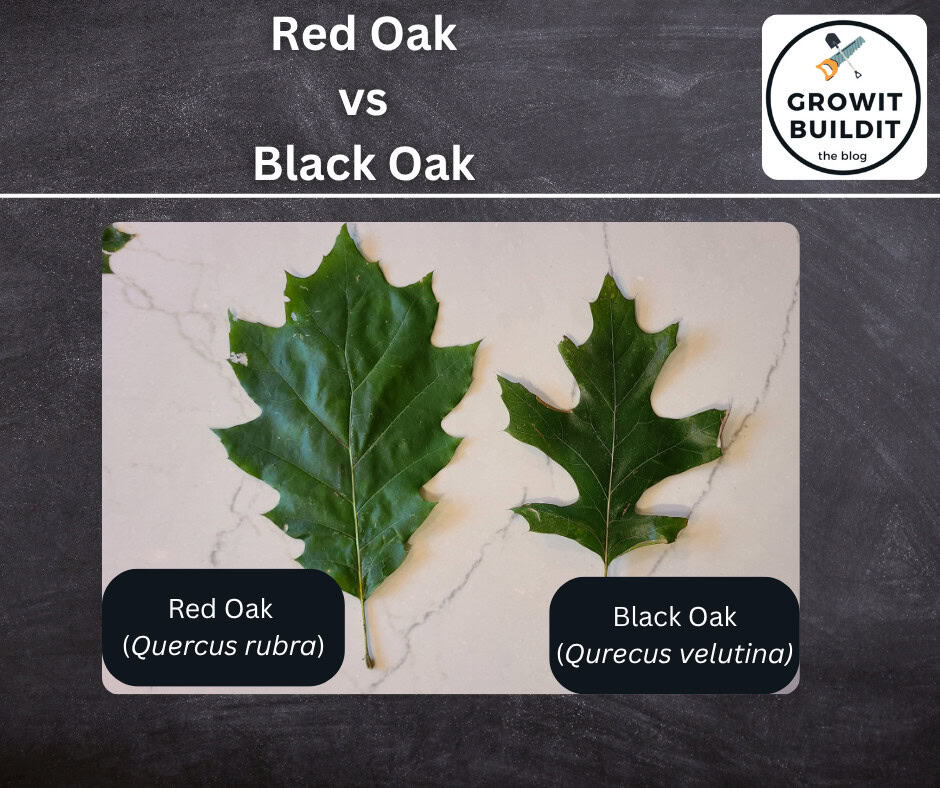
Acorn comparison
There are two primary differences in acorns between Red and Black Oak. Red Oak Acorns have a cap that covers about 1/4″ of the acorn, while Black Oak caps cover almost half. Also, Red Oak acorns are larger, being 3/4″-1.5″ long, while Black Oak are 1/2″-3/4″ long. For the acorns of both species, the diameter will be approximately equal to it’s length.
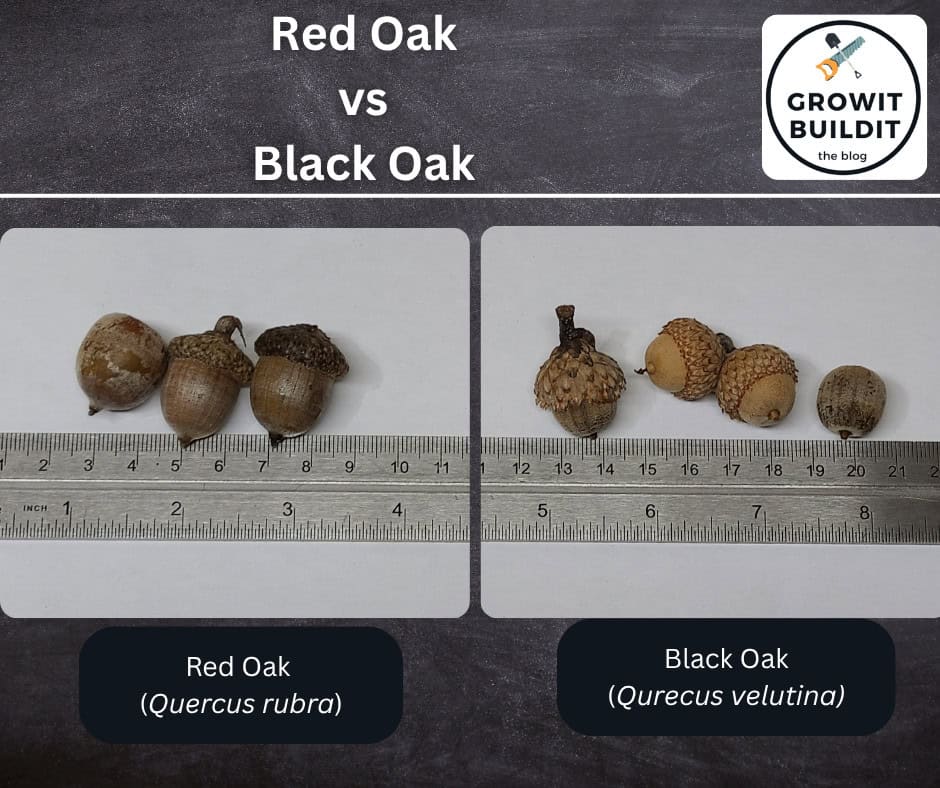
Bud comparison
The terminal leaf buds can be a clue to differentiating Red and Black Oak. Red Oak buds are red to brown in color, and may have hairs at the tips. Black Oak buds are covered in very tiny white hairs, and are gray or a brown/tan color. So, looking for if the buds are covered in tiny, short white hairs can point you in the right direction, particularly if it is a very immature tree as the bark is harder to differentiate when young.
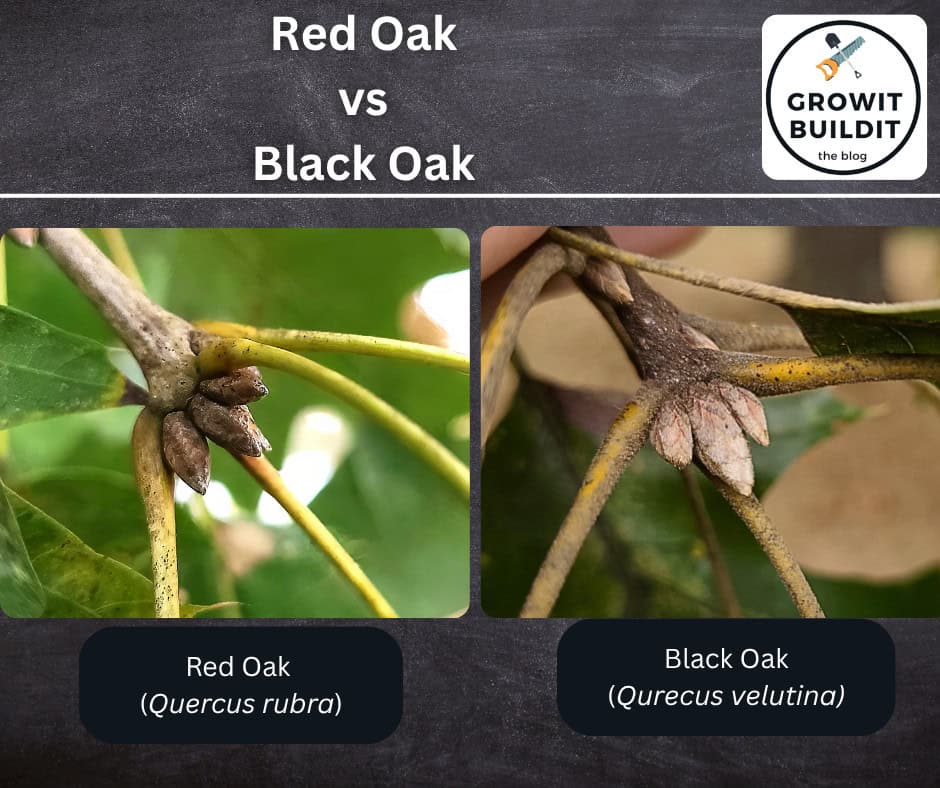
Red oak
Bark
As shown below, you can see the furrows of Red Oak are shallower than Black, and the ridge tops are much smoother.
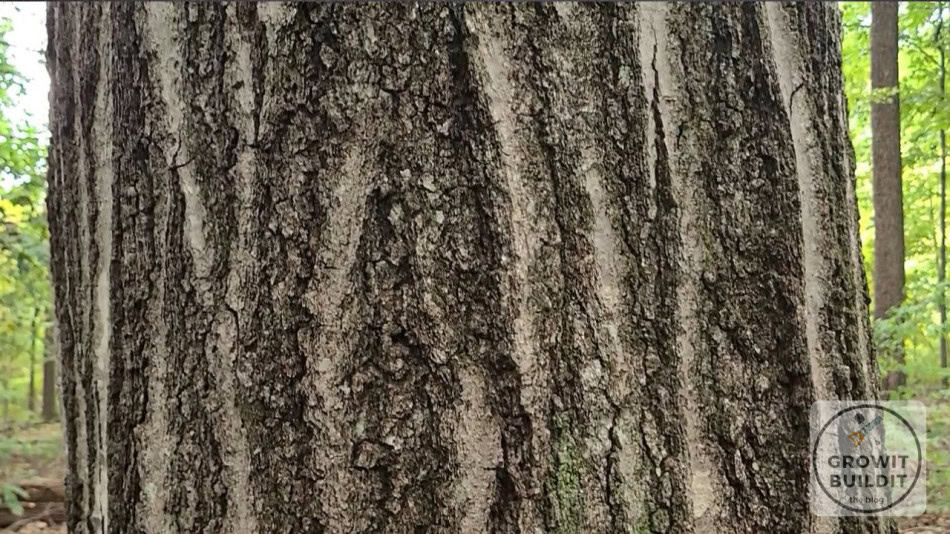
Leaves
The only real differentiating clue you can get from a Red Oak leaf is if it has 11 lobes. Because as shown below, even the lobe cut-outs sometimes extend more than half-way to the central vein.

Buds
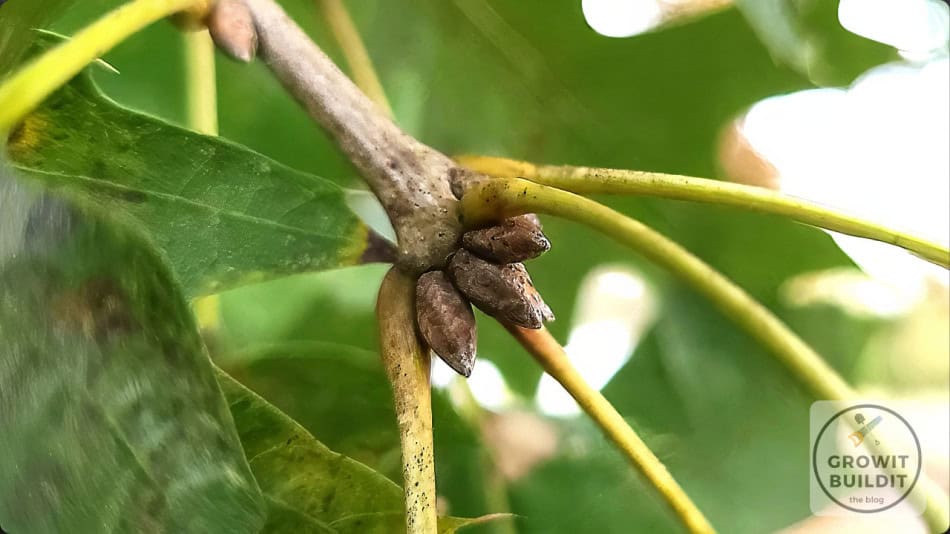
Acorns

Black Oak
Bark
Black Oak bark has a rougher texture and appearance overall. When looking at trunks, it is easy to say that it isn’t Red Oak.

Leaves
Black Oak leaves are very similar to Red Oak leaves. Many of their characteristics are either the same, or overlap in ranges (size / shape, margins) So much so that it can confuse most plant identification apps.
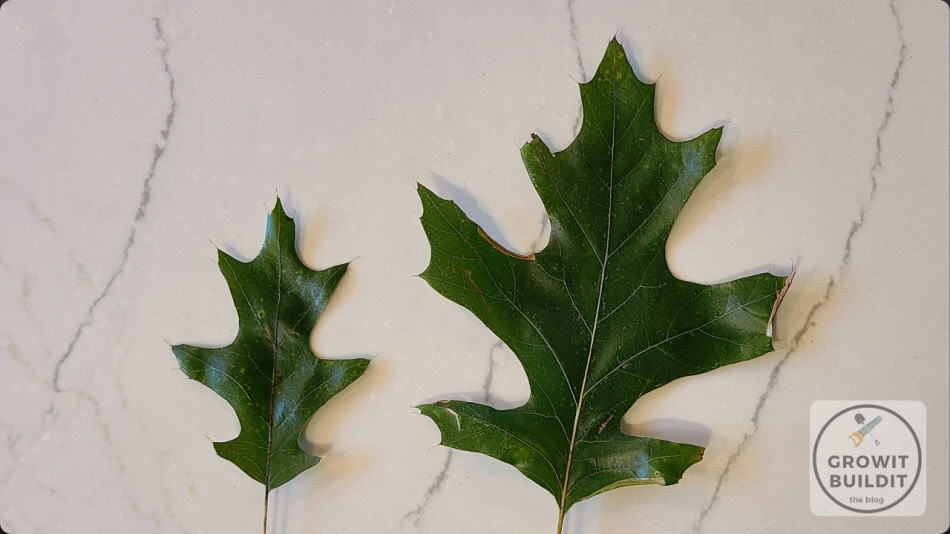
Buds
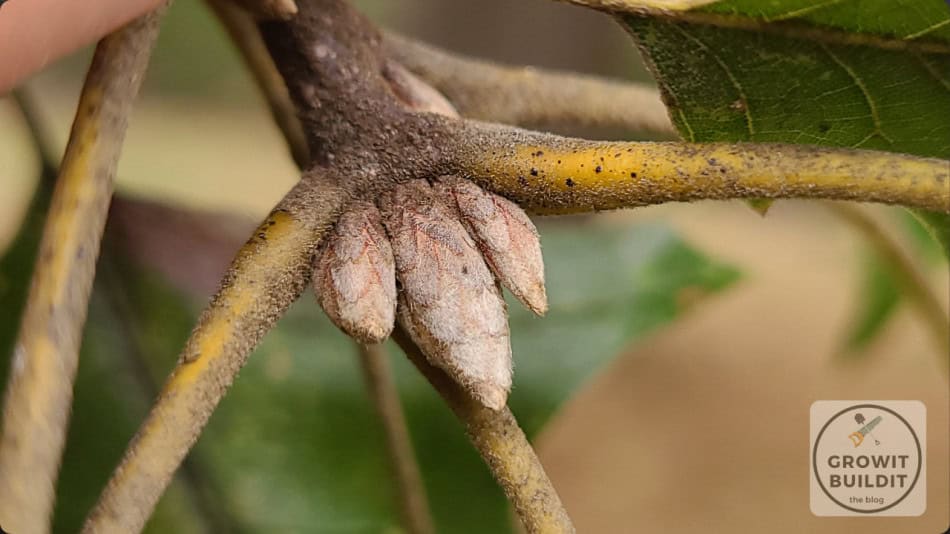
Acorns
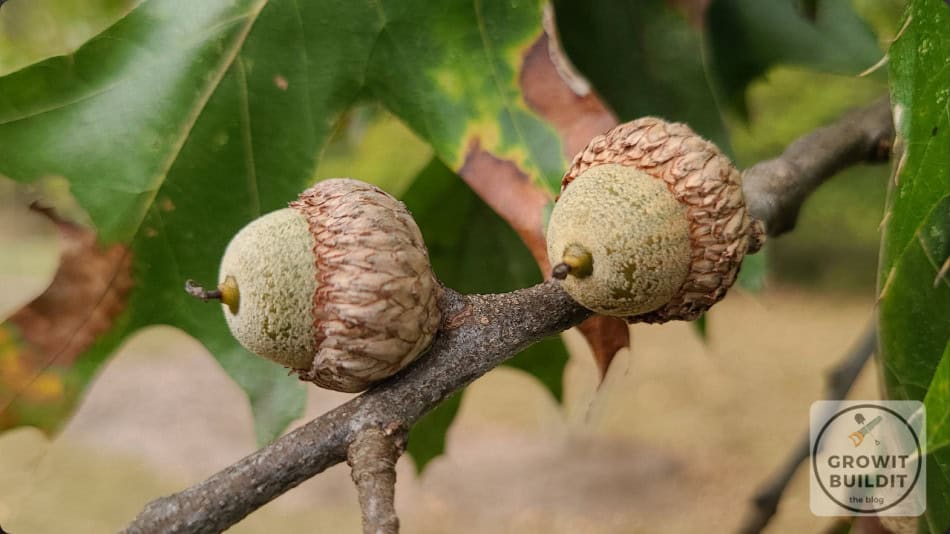
The acorns do provide an excellent visual difference in that the Red Oak caps do not extend far down the body of the acorn, whereas Black Oak acorns cover nearly half the body. Their size range does overlap a bit, so you can’t always rely on size alone to differentiate the two species based on their acorns.
Conclusion
Red Oak and Black Oak both cut a magnificent profile against a horizon and make a beautiful, strong addition to any forest. For most practical purposes, it really doesn’t matter which species you would have as they are both extremely beneficial to the environment. But, to the botanically curious sometimes you’ve just got to know which is which. And, the easiest way to differentiate the two is by examining the bark on mature specimens. If you see the vertical “roads” made by the tops of the smooth ridges, then you know you have Red Oak, while a rougher bark is that of Black Oak. But absent that, the acorns can also be helpful, particularly if the cap is attached. Leaves of both species are so similar that is is very difficult to differentiate from examining a leaf by itself.
Find more native trees here!
References:
[1] – Sander, Ivan L. “
[2] – Sander, Ivan L. “
[3] – Nesom, Guy, Northern Red Oak, USDA Plant Guide. 2001
[4] – Tirmenstein, D. Quercus rubra, northern red oak. US Forest Service. 1991.
[5] – Quercus velutina, USDA Forest Service, Fire Effects Information System. Accessed 08OCT2025.
Recent Posts
Ok - so here is a little DIY Christmas gift for kids that is a lot of fun to make and shoot. A simple toy gun that shoots milk-jug caps...so that means ammo is free and you will never run...
Sweet Coneflower - A Complete Profile On Rudbeckia subtomentosa
Sweet Coneflower is a herbaceous perennial flower native to the Midwestern United States[1]. Scientifically known as Rudbeckia subtomentosa, it grows 3-5' tall in full sun and moist to medium-moist...
